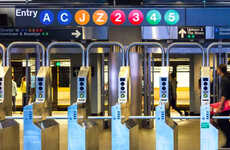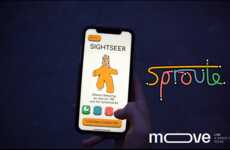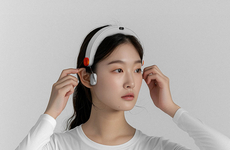
The Commute Booster App is Made to Help the Visually Impaired
The Commute Booster app is designed and developed by researchers at the Tandon School of Engineering and the Grossman School of Medicine in New York City. It is a platform that helps those with visual impairments better navigate the subway system in the busy city. The app uses the smartphone camera to recognize signs along the route in order to properly guide users to their destination and dismiss any nonessential signs.
Blending together general transit feed specification, which is a publicly available database about public transportation routes with optical character recognition, it is able to understand the signs and properly guide users. They state in a press release that “By integrating these two components, Commute Booster provides real-time feedback to users regarding the presence or absence of relevant navigation signs within the field of view of their phone camera during their journey."
Image Credit: Gary Gernshorn, Getty Images
Blending together general transit feed specification, which is a publicly available database about public transportation routes with optical character recognition, it is able to understand the signs and properly guide users. They state in a press release that “By integrating these two components, Commute Booster provides real-time feedback to users regarding the presence or absence of relevant navigation signs within the field of view of their phone camera during their journey."
Image Credit: Gary Gernshorn, Getty Images
Trend Themes
1. Smartphone Camera Recognition - Opportunities for creating smartphone apps that utilize camera recognition technology to assist visually impaired individuals in navigation.
2. Optical Character Recognition - Innovations that leverage optical character recognition technology to enhance navigation experiences for individuals with visual impairments.
3. Real-time Feedback - Emerging trends in providing real-time feedback to visually impaired users during their journey for more efficient navigation.
Industry Implications
1. Mobile App Development - The development and evolution of mobile applications that cater to the specific needs of visually impaired individuals.
2. Transportation - Opportunities for integrating impaired-aiding navigation apps within transportation systems to improve accessibility for visually impaired commuters.
3. Assistive Technology - Advancements in assistive technology for visually impaired individuals, specifically in the field of navigation and wayfinding.
6.8
Score
Popularity
Activity
Freshness
























